The influence of Franciscan spirituality gave a renewed meaning to earthbound reality and triggered a major transformation in art history. Begining with Giotto, artists began to focus on created reality as a source for artistic inspiration. The artists that followed him in this development continued to paint the Resurrection, which was now imbued with a new significance as artistic developments came to be applied to old models. In the Scrovegni Chapel, Giotto’s inclusion of the sleeping soldiers in his Noli Me Tangere (above) is interesting as it suggests that Jesus has just exited the tomb. This image has its origins in the Rabbula Gospel mentioned in the last post.
This depiction of the body of Christ, both strong and tender, exiting from his earthly tomb, becomes the model for Western artists’ depiction of the Lord for the next several hundred years.
Tintoretto 1579
Cecco da Carravaggio 1619
Tissot 1882

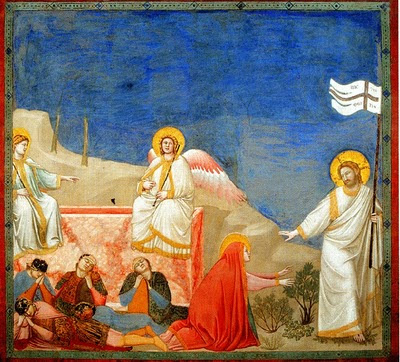
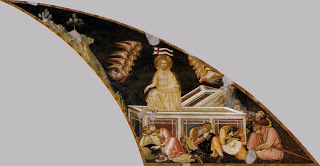
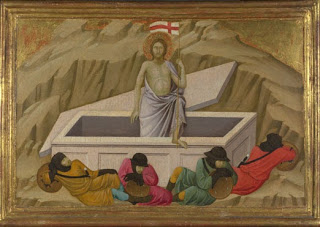

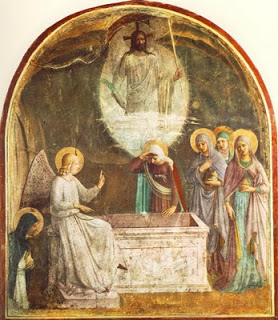
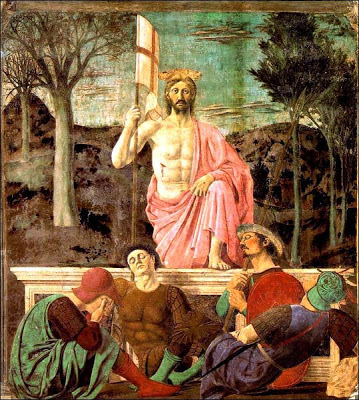
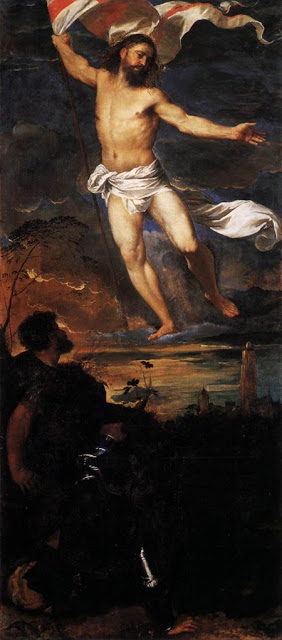

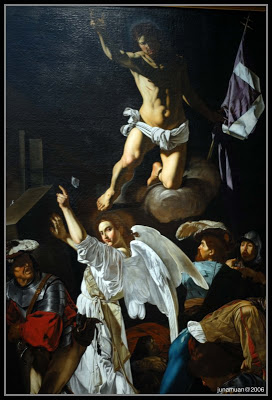

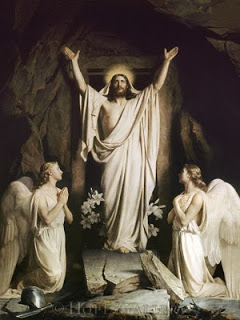
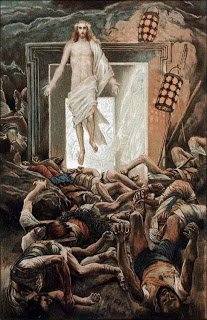


The Western-style Resurrection icon was later adapted for Orthodoxy, as in this example:
http://bonovox.squarespace.com/storage/resurrection%20icon.bmp
I find this icon reminiscent of the Ark of the Covenant, upon which the God of Israel was understood to be enthroned "between the cherubim". The angels seated upon the Tomb are like the cherubim on the cover of the Ark, flanking the triumphant Christ.